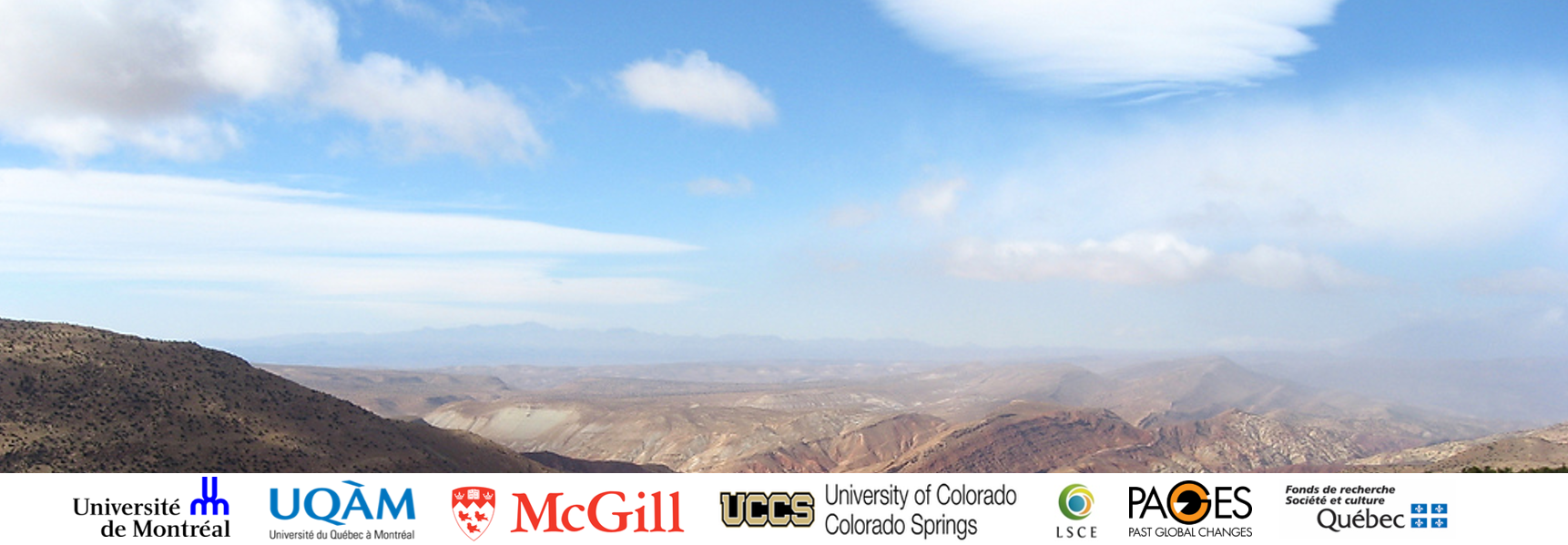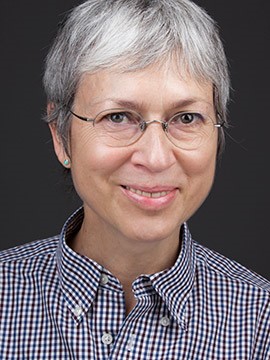TEAM MEMBERS
Ariane BURKE
As a paleoanthropologist, my research interests revolve around understanding patterns of land-use in prehistory. I am currently conducting archaeological surveys in Guadalajara (Spain) in an effort to uncover evidence of the Palaeolithic occupation of the Iberian Peninsula. As an archaeozoologist, I am particularly interested in modelling the spatial behaviour of prehistoric prey species as a means of interpreting past landscapes and the spatial distribution of Neanderthal sites.
Julien RIEL-SALVATORE
julien.riel-salvatore@umontreal.ca
I am a prehistoric archaeologist interested in the human-environmental interface of major transitions in the human past, especially the Middle-Upper Paleolithic transition and the shift to agriculture; specifically, I focus on the impact humans have had on their environments at these key moments of our species history, as well as the impact of climatic factors on contingent patterns of human evolution. I investigate these questions through both fieldwork in northern Italy (Liguria) and Mozambique and various modeling experiments. Theoretically, I approach these questions from perspective rooted in niche construction theory and evolutionary ecology.
COLIN WREN
Assistant Professor at University of Colorado, Colorado Springs. I am interested in reconstructing past foraging and mobility behavior, human-environment interactions, and the evolution of complex cognition through methods such as agent-based modeling and spatial analysis. As a part of the HDRG, I am developing models of human-human and human-environment interaction in Western Europe during the Last Glacial Maximum.
Claude HILLAIRE-MARCEL
hillaire-marcel.claude@uqam.ca
His research, sanctioned by more than 300 publications and several scientific awards and distinctions, has begun to address various aspects of the climate-ocean system dynamic, through both geochronology and isotopic tracers of past and present peoples' conditions. Hillaire-Marcel provides the essential expertise for the geochemistry of isotopes of oxygen, carbon, nitrogen and strontium.
olivier moine
My work focuses in particular on the impact of climatic variability on the periglacial paleoenvironments of western and central Europe Specifically, I am interested in building a dynamic spatio-temporal environmental framework for the last Ice Age, particularly between 35,000 and 20,000 years ago, in order to better constrain the impact of climatic and environmental variations on the spatio-temporal dynamics of prehistoric settlements.
Masa KAGEYAMA
Director of Research at CNRS. Head of long-term climage modelling team at Laboratoire des Sciences du Climat et de l'Environnement (CLIM team - UMR 8212)
Pierre SEPULCHRE
Research Officer CNRS. LSCE Climate Modelling Group. Research interests: Evolution of climate over the last 50 million-years and its link with biological evolution ; Climate modelling, paleoclimate data ; Palynology, Paleontology, Phylogenetics. Areas of interests: South America, Africa.
Gilles RAMSTEIN
Head of the "Mankind, Climate and Environment" group at Laboratoire des Sciences du Climat et de l'Environnement (UMR 8212)
William BANKS
Associate researcher CNRS, UMR5199 - PACEA. Adjunct Research Associate, Biodiversity Institute, Univ. of Kansas
Modelling of eco-cultural niches
MICHELLE DRAPEAU
Several of my research projects are oriented towards gaining a better understanding of the ways in which behaviour is reflected in the skeletton, in order to better understand the morphology of fossil hominids. Behavioural innovations, such as bipedalism and the abandonnement of an arboreal niche, produce morphological changes. These transformations are the expression of adaptive pressures affecting hominids and therefore, enable us to recreate a vital dimension of their evolutionary history.
Francesco PAUSATA
Assistant Professor at the Department of Earth and Atmospheric Sciences in the University of Quebec in Montreal. My research focuses on understanding and estimating the role of aerosol particles on atmospheric circulation and ocean circulation and their feedbacks on aerosol distribution. Specifically I use global climate models and observational data to characterize variations in climate variability in the North Atlantic and tropical region associated to gradual (e.g., anthropogenic) or rapid (e.g.,volcanic eruptions) changes in aerosol burden. I also work on past climate dynamics with particular focus on the last deglaciation, interpreting the signal recorded in proxy records with the help of climate models.
Anne DE VERNAL
Professor at the Université du Québec à Montréal (UQAM), Centre GEOTOP. My research focuses on oceanographic, climatic and environmental changes in mid-to high-latitude marine environments over the last thousand years.
MATTHEW PEROS
I am a broadly trained physical geographer working at the interface between the climatological, ecological, and archaeological sciences.
My contribution to the HDRG will be to assist with reconstructions of the earth system to provide environmental context(s) for late Pleistocene migrations and dispersals in western and central Europe.
COLLABORATORS
Andreas Maier
Junior professor at the Institute of Prehistoric Archeology, University of Cologne
Research interests: Cultural Evolution, Human-Environment-Relationships in the Palaeolithic, Upper Palaeolithic in Central and Eastern Europe, Palaeodemography
PAST COLLABORATORS
Patrick JAMES
Spatial ecologist with interest in forest disturbance dynamics, spatial modelling, and landscape genetics. Currently, his work focuses on developing landscape genetic and statistical modelling approaches to better understand the relationships among landscape heterogeneity, dispersal, and the population dynamics of irruptive forest insect pests.
André COSTOPOULOS
Research interests: evolution of social complexity, quantitative and computational methods on archaeology, agent-based simulation in anthropology, prehistoric exchange networks, prehistory of northern Europe.
James CONOLLY
Research Interests: landscape archaeology; historical ecology; geoinfomatics; radiocarbon modelling; lithic raw materials and technologies (Great Lakes)
LILIANA PEREZ
Research interests: spatial analysis and modeling and geographic information systems (GIS) can provide insights and context into complex problems such as climate change, landscape ecology, and forestry by explicitly representing phenomena in their geographic context. My research focuses on the inherent multidisciplinary nature of Geographical Information Science (GIScience) to investigate the relationships between ecological processes and resulting spatial patterns.
James KING
As a geomorphologist I study the interactions of the wind and sediment and their impact on the climate, specifically focusing on increasing our ability to predict wind erosion by focusing on small-scale variables that can change the threshold of sediment transport up to large-scale transport mechanisms that alter ecosystem functions. With an approach that combines field measurements with novel methodologies, remote sensing, and atmospheric reanalysis data with empirically-based models, my research attempts to identify and improve model parametrization of dust transport processes and their direct and indirect effects.
Michael BISSON
Professor, Department of Anthropology at McGill University.
Research Interests: Archaeology, Middle Palaeolithic, Iron Age, experimental archaeology, lithic typology, metallurgical and lithic technology, Central Africa, Europe.
Mathieu VRAC
Leader of the ESTIMR team. CNRS Research scientist at Laboratoire des Sciences du Climat et de l'Environnement (UMR 8212)
Marc FASEL
PhD Candidate at the Institute of Environmental Sciences at the University of Geneva, Switzerland. His research involves spatial and temporal analyses of environmental phenomena, hydrology modelling as well as water resources management using geographical information systems. Marc aims to gain a better understanding of the complex interactions between the availability of natural resources and the needs of human populations and ecosystems.
Guillaume LATOMBE
glatombe@exseed.ed.ac.uk
Ecologist and modeller. Lecturer in environmental change biology. Institute of Evolutionary Biology, U. of Edinburgh.

![HRDC_Ariane[1].jpg](https://images.squarespace-cdn.com/content/v1/560bfce6e4b0e1d81b179bca/1570549133373-LH0F7MWEM9VS3WNWWRMD/HRDC_Ariane%5B1%5D.jpg)






















